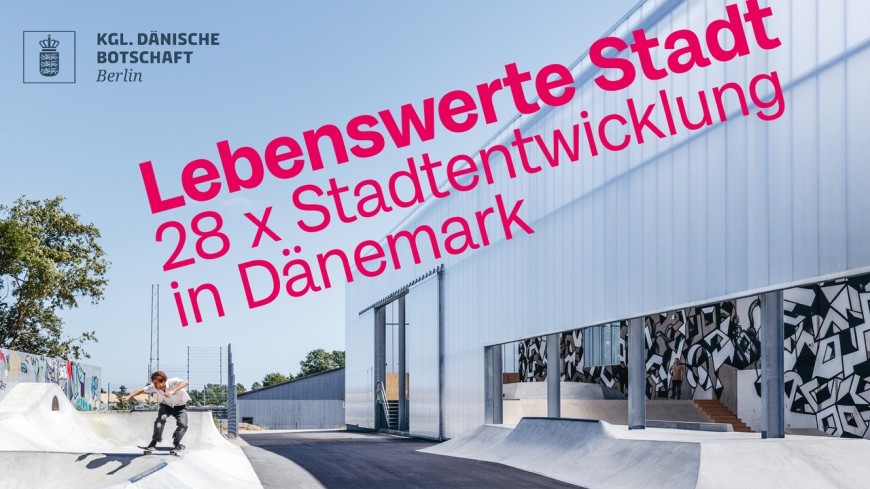Exhibition | Livable City
28 x Urban Development in Denmark
2024/11/18
Without citizens, there is no city. At the same time, cities must prepare for the future and become more sustainable. But how can cities be designed to be livable for all? The new traveling exhibition by the Danish Embassy showcases 28 examples from Denmark, illustrating how this can be achieved. Location: Kuhle – Foyer of the Department of Architecture, TUDa El-Lissitzky-Straße 1, 64287 Darmstadt | December 3, 2024 – January 31, 2025 Opening: December 10, 2024, at 4:30 PM
The exhibition Livable City presents a series of successful examples of architecture and urban planning from Denmark, intentionally including projects outside the largest cities. The exhibition, made using recycled materials, is complemented by interviews and film impressions of the projects. As a kaleidoscope of diverse projects, the exhibition also aims to spark a discussion: What makes a city livable? For whom are we building, and who is allowed and able to participate?
A city is not just its buildings; it becomes a city when life exists between those buildings. How do you plan and build for that? The era of the modernist architectural mistakes of the 1960s – with vast spaces for car traffic – also left its mark on Denmark. Since then, much has changed.
Today, urban planning must address corrections where city centers are dying and where ports are no longer used for industry. This can be experienced in Svendborg on Funen, where a vibrant harbor environment is being created. It’s also about creating spaces for encounters and communities.
Urban planning must also be carried out with respect for sustainability and with consideration of climate change, as flooding risks are very real. How this can be combined is shown, for example, in the blue-green garden city of Kokkedal and the climate district of Skt. Kjelds in Copenhagen.
Denmark undoubtedly boasts some fantastic architectural flagships, but the question of whether new construction is always necessary is also posed by Danish architects. Projects such as Maltfabrikken in Ebeltoft, Polymeren on Funen, or the Roskilde Festival Højskole demonstrate how vacant older industrial buildings can be revitalized – often driven by citizen initiatives themselves.
Lastly, the question arises of whether everything always needs to be built or intervened upon. Not everything can be planned, and in some cases, it is better to leave the city to its people and their appropriation of the space. As seen in the case of Fjordbyen in Aalborg.
#LivableCity
Exhibition: Livable City – 28 x Urban Development in Denmark (um.dk)
An exhibition by the Royal Danish Embassy in collaboration with the Danish Institute for Urban Planning
With kind support from the Danish Ministry of Foreign Affairs, the Danish Ministry of Culture, Dreyers Fond, as well as Larry versus Harry and out-sider.
Opening Program:
16:30 – Welcome by Dean Prof. Felix Waechter
Exhibition Introduction – Irminger Sonne, Danish Embassy
Keynote – Julian Weyer, C.F. Møller Architects (Aarhus, Denmark)
Following: Reception with Champagne and exhibition viewing at the Kuhle


